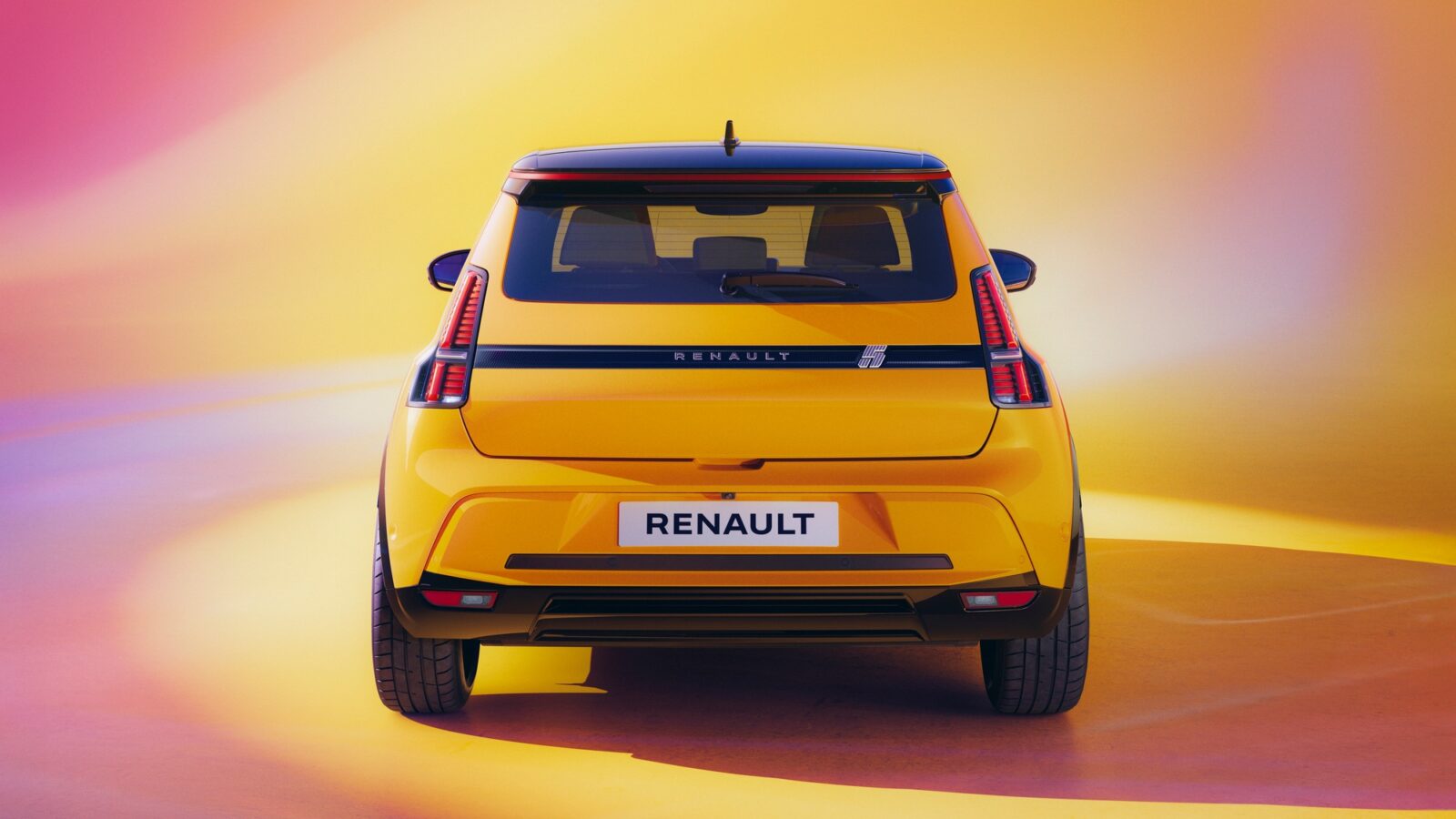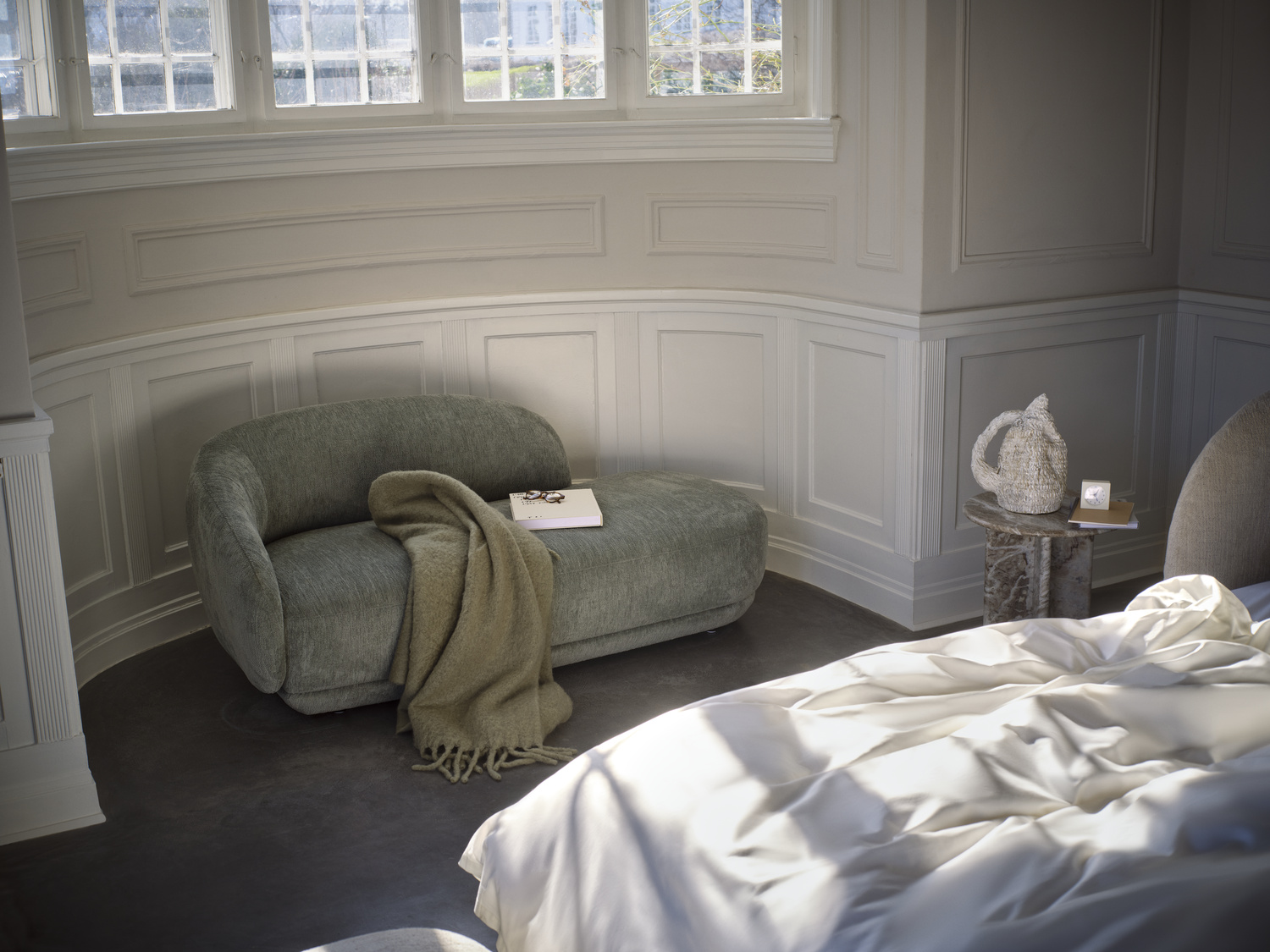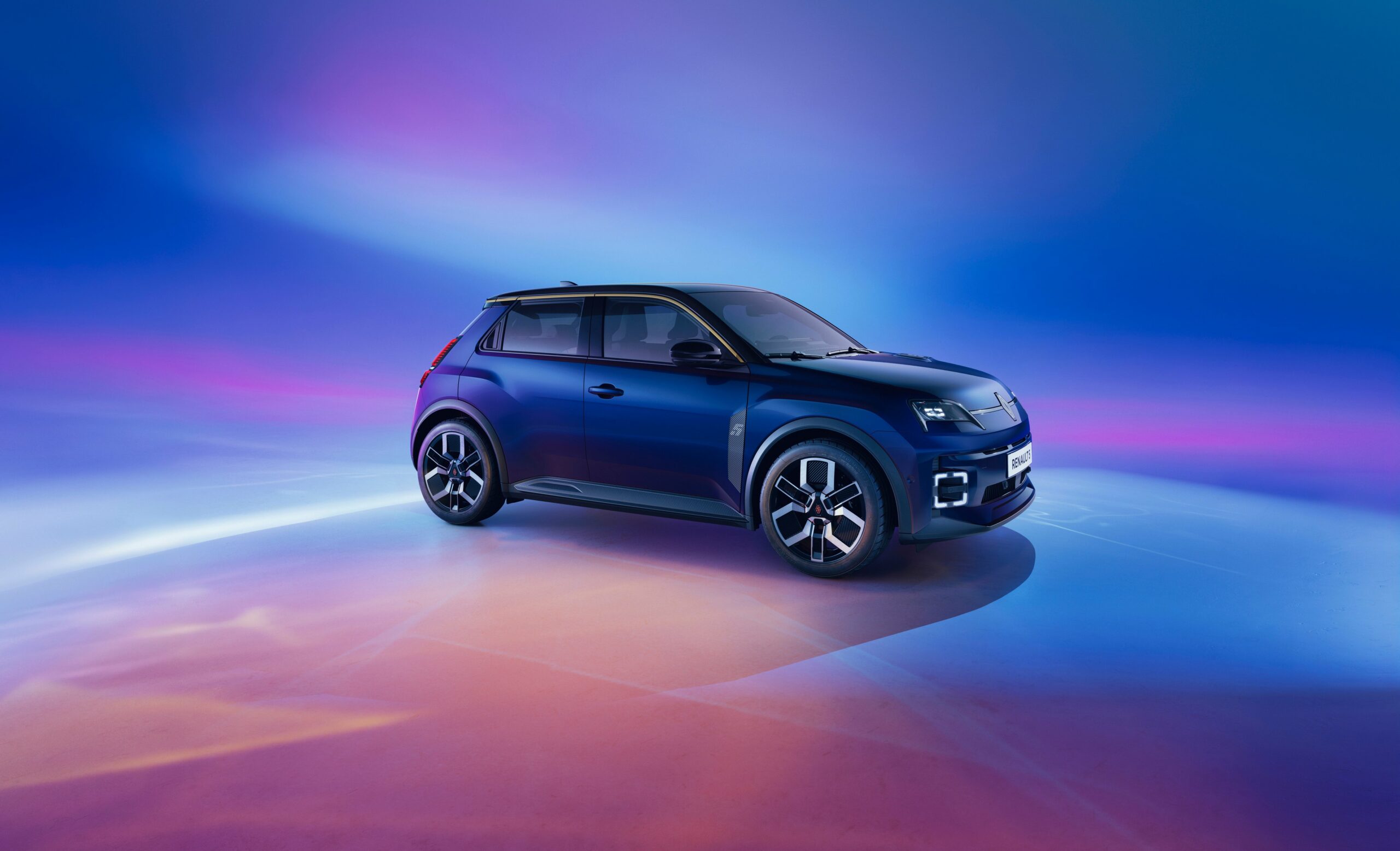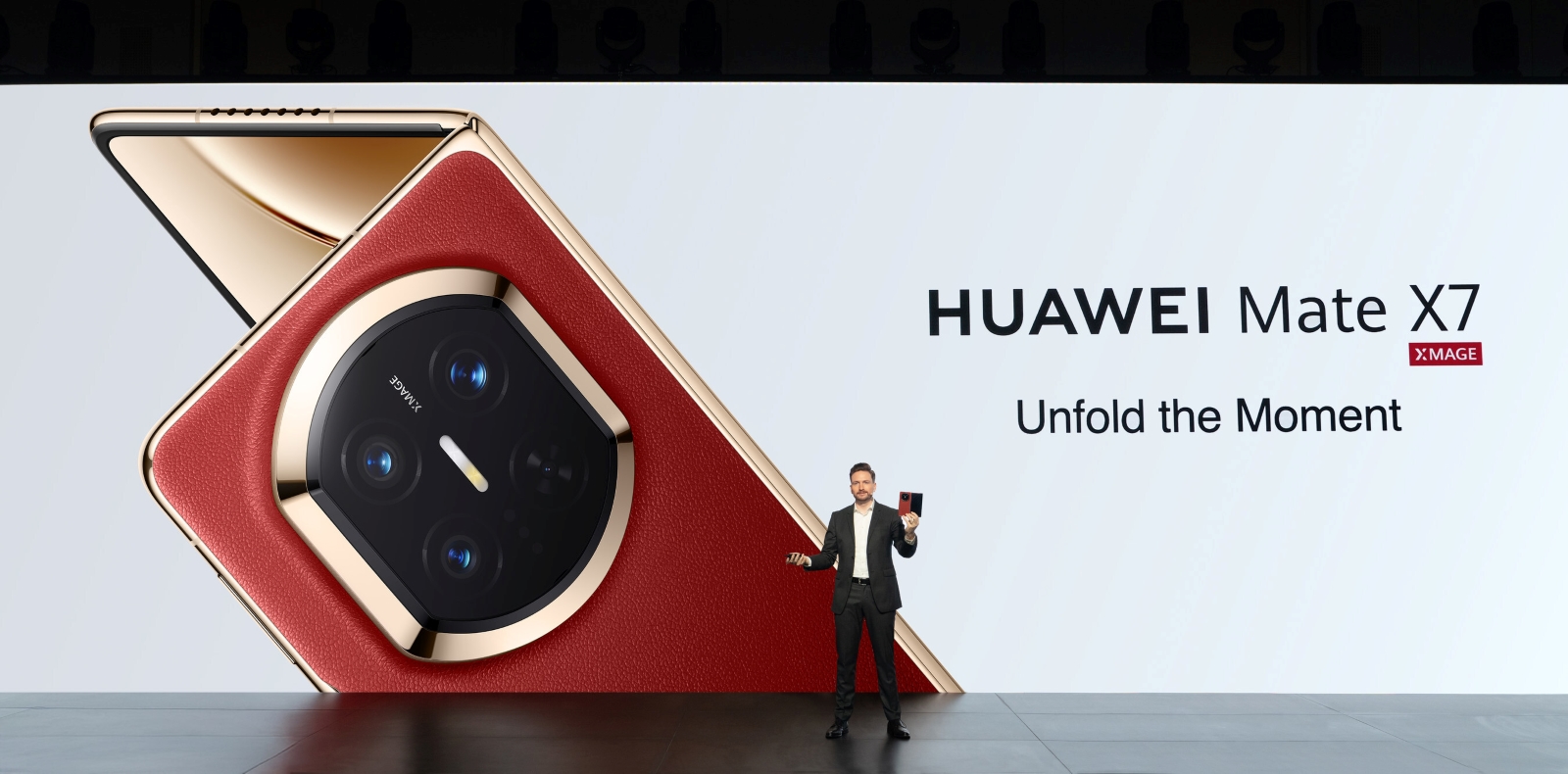Header: Courtesy of Renault
The Renault 5 E-Tech Electric is a compact electric hatchback based on a new EV platform called AmpR Small. The model revisits the form and scale of the original Renault 5 from the 1970s and 80s but applies it to a modern electric drivetrain and layout. At 3.92 metres long, the car is slightly shorter than the Renault Clio but offers comparable interior space due to its long wheelbase and underfloor battery placement.
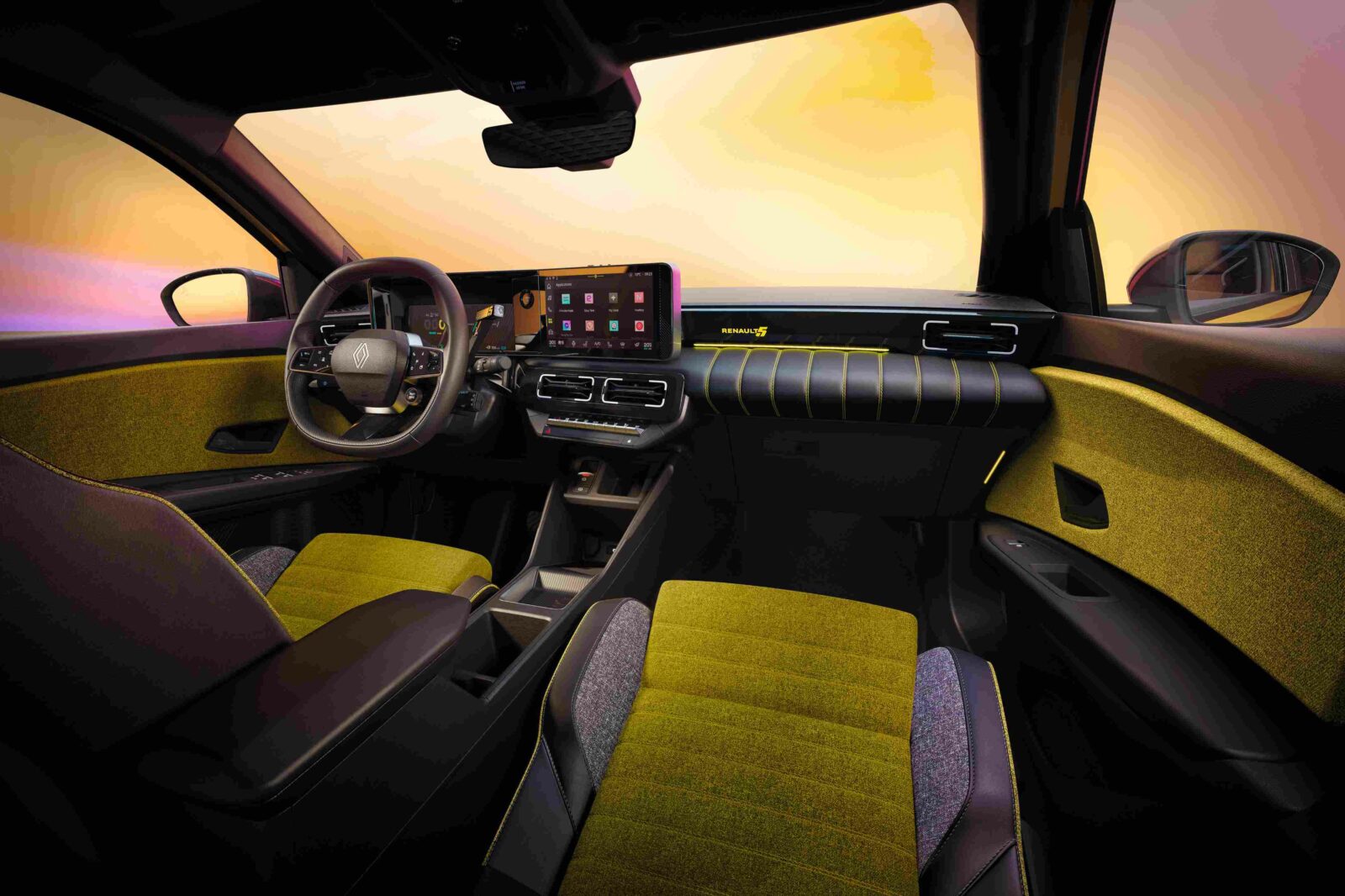
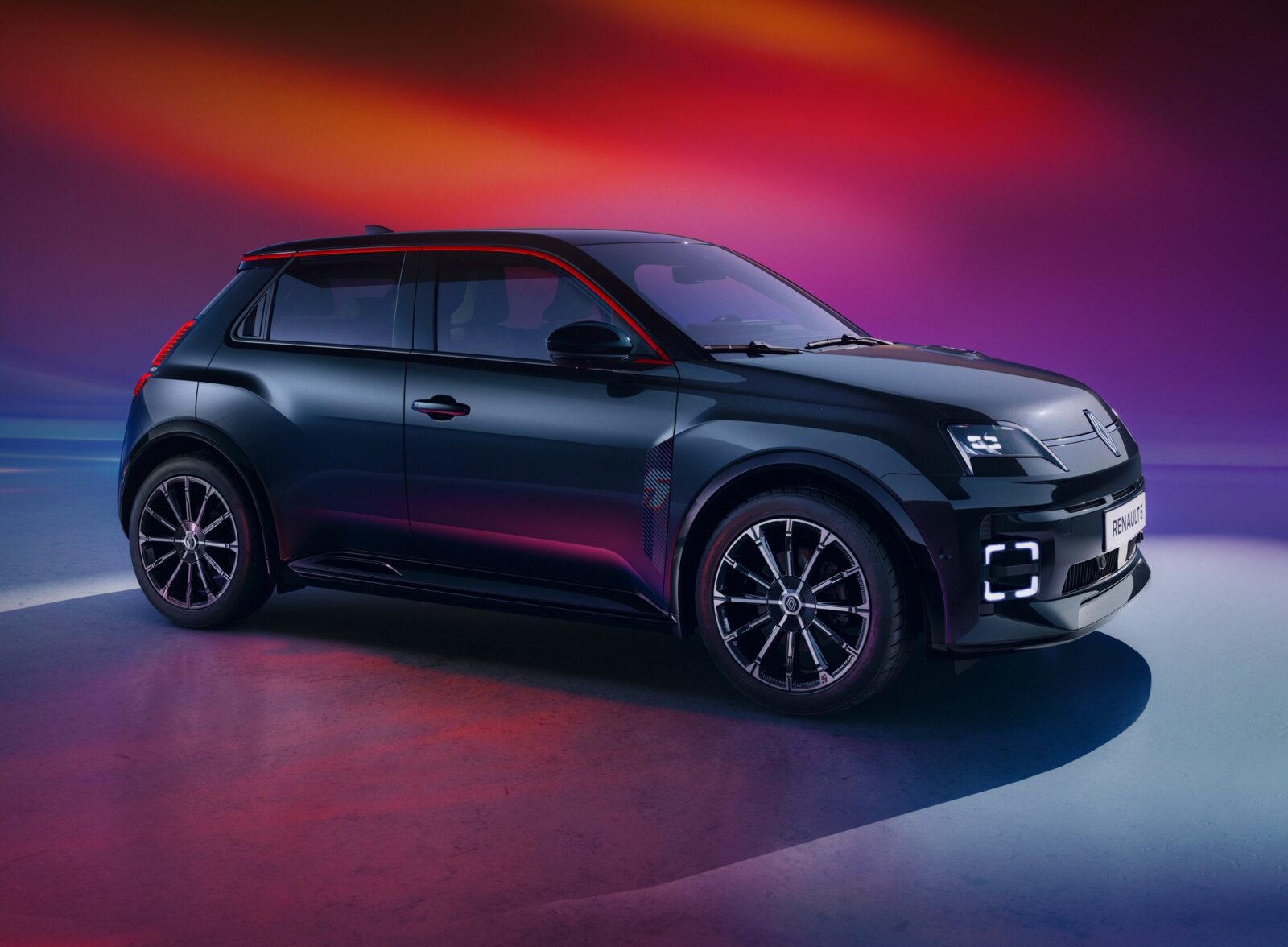
Exterior and interior design
The exterior keeps a boxy, upright shape with short overhangs and large 18-inch wheels positioned at the corners. References to earlier Renault 5 versions include wide vertical rear lights, rectangular front lighting details, and compact overall proportions. New features include a charge indicator in the shape of the number 5 on the bonnet and a slim upper grille that replaces the original car’s vent.
The car will be offered in bold, neutral colour options, including bright tones based on original Renault 5 paint codes. Wheel designs vary by trim level, but all versions use 18-inch alloy wheels with narrow-profile tyres.
The interior includes two 10-inch horizontal screens, one for driving information and one for media and controls. Standard features include Android Auto and Apple CarPlay, with Google-based software and voice control built into higher trim levels. The Iconic Five models’ dashboard includes backlit trim and a two-tier design that refers to past Renault interiors. Seat fabric on upper trims is made from recycled materials, and select elements use bio-sourced plastics.
The boot has a capacity of 326 litres and a split-fold rear bench for added flexibility. Additional storage is integrated into the cabin, and optional clip-in accessories are available for further organization. The interior width is 1.38m at the front and 1.36m at the rear.

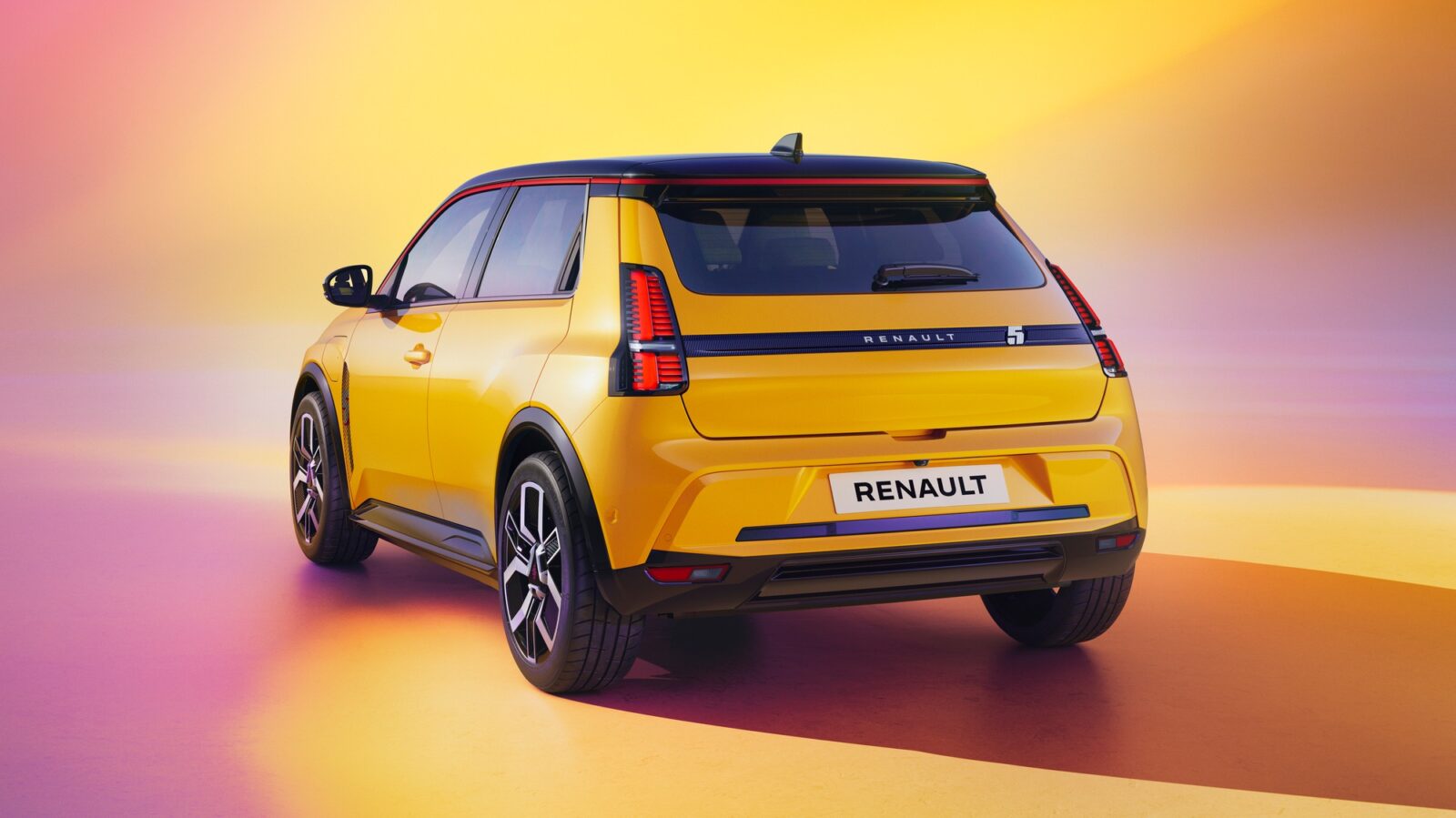
Platform, performance, and systems
At launch, the Renault 5 E-Tech Electric will be available with a 52 kWh battery paired with a 110 kW (150 hp) motor, but a 40 kWh battery and a 90 kW (120 hp) motor will be available later. The larger battery offers a range of up to 400 km (WLTP), while the smaller version provides up to 300 km. Both batteries are lithium-ion using NMC chemistry and liquid cooling, and both versions support AC charging at 11 kW and DC fast charging—up to 100 kW on the larger battery and 80 kW on the smaller one.
The motor is a wound rotor synchronous type with no permanent magnets. The 110 kW version accelerates from 0 to 62 mph in under 8 seconds. Both motors are combined with a new “One Box” brake module that combines ESP and braking control to improve responsiveness and regenerative braking transitions.
The car uses multi-link rear suspension, which is uncommon in this size segment, and features a short steering ratio for low-speed manoeuvrability. The turning radius is 10.3 metres. The suspension has been tuned to manage the weight of the underfloor battery while maintaining cabin comfort. Bidirectional charging is standard, with support for both V2L (vehicle-to-load) and V2G (vehicle-to-grid) applications, depending on regional infrastructure. V2L provides a 220V outlet that can power external devices such as small appliances or tools up to 3,700W.
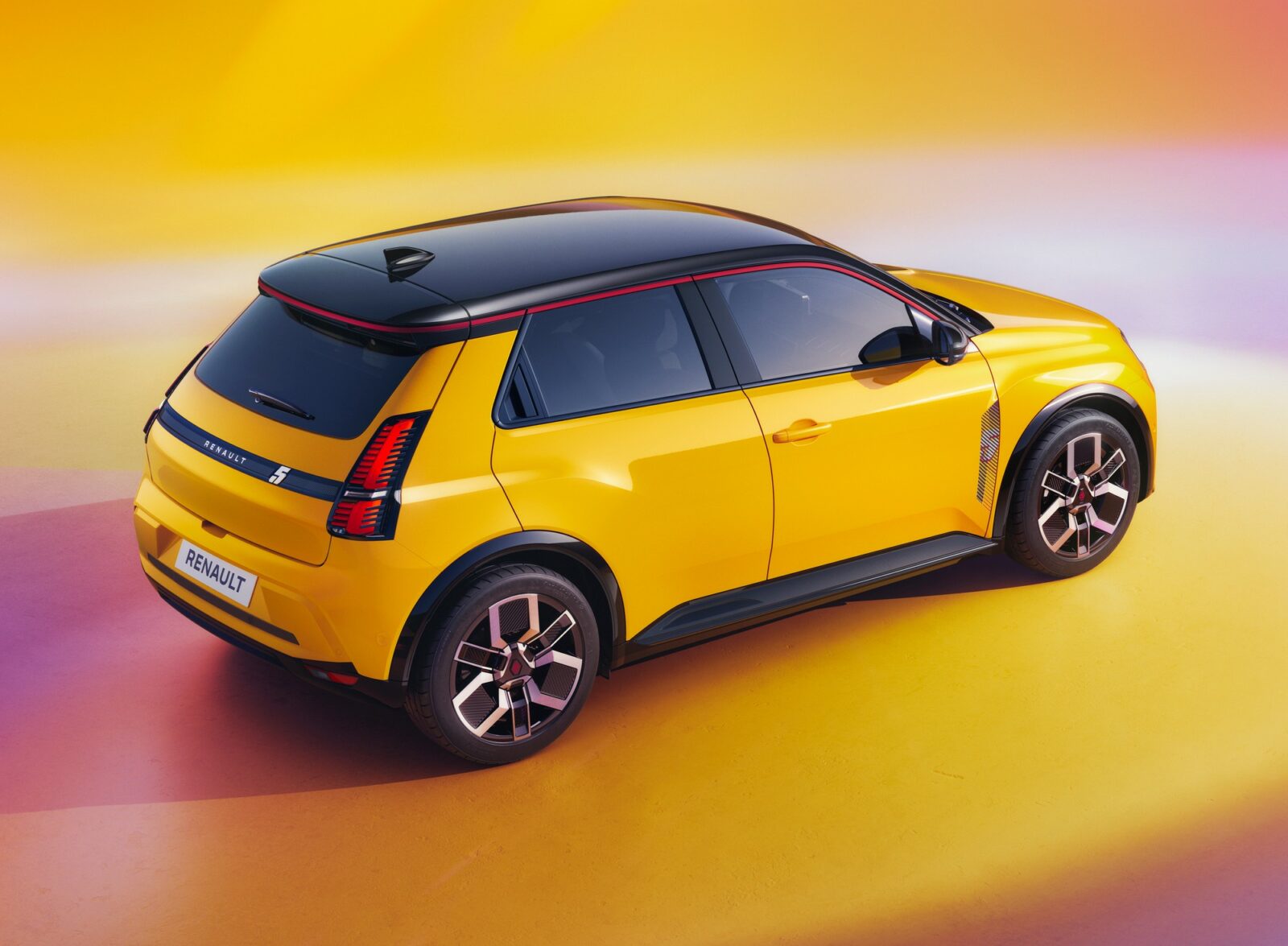
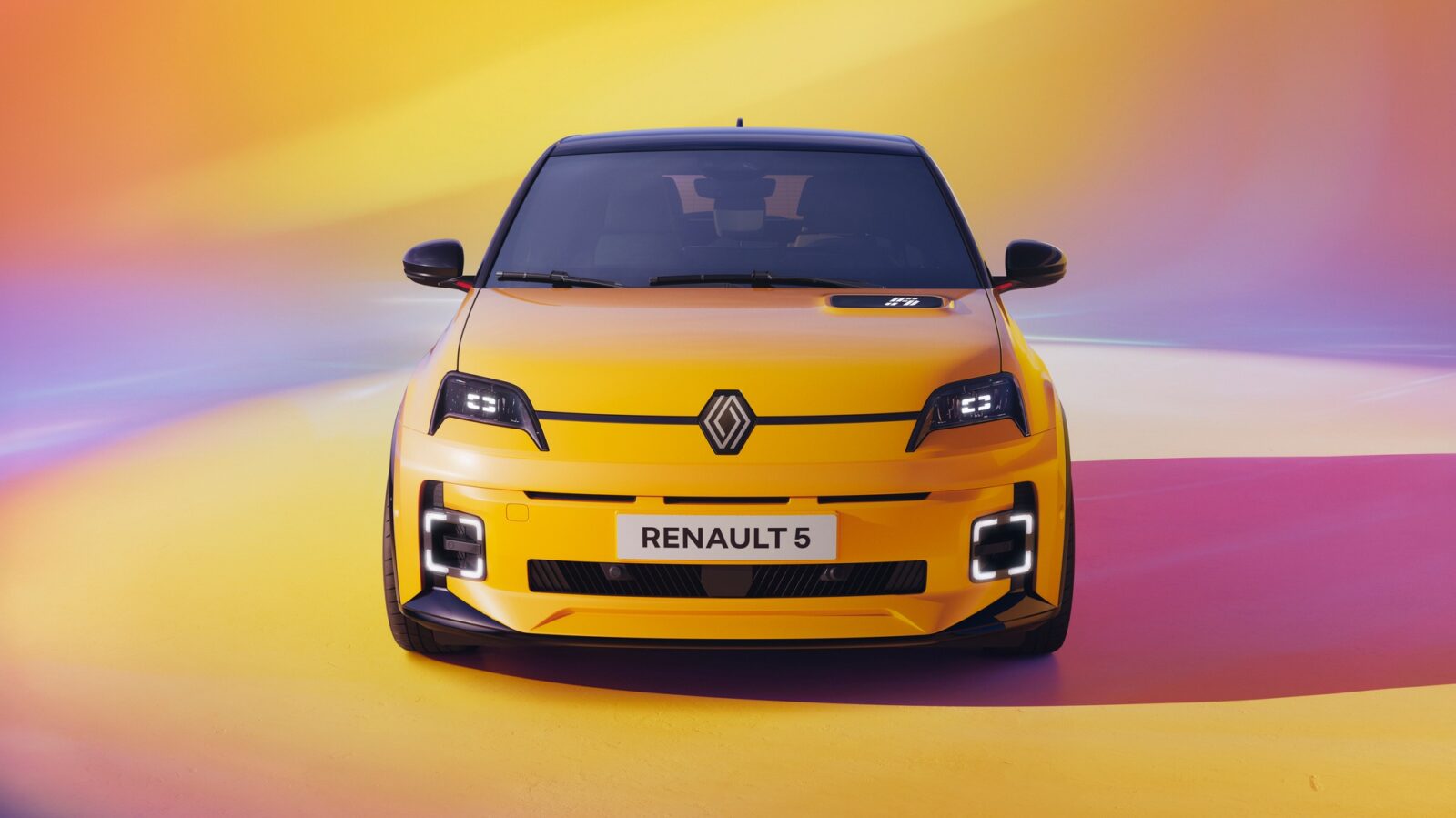
Trim levels at launch will include Techno and Iconic Five, both using the 52 kWh battery. Standard equipment includes 18-inch wheels, full LED headlights, hands-free access, climate control, and advanced driver assistance systems. A Roland-Garros edition and other rotating “Collection” trims are planned post-launch.
Driver assistance features include adaptive cruise control, automatic emergency braking (including in reverse), lane-keeping functions, hands-free parking, and a safety advisor tool that provides feedback on driving habits. A virtual assistant called Reno is integrated into the infotainment system, capable of responding to voice commands and helping users manage vehicle settings, charging, and route planning.
Production will occur in France, with vehicle assembly at Douai, Cléon Motors, and Ruitz Batteries. Renault aims to keep production local and reduce emissions across its supply chain, so recycled materials make up 22% of the car. Renault also reports an 85% recyclability rate at end-of-life.

